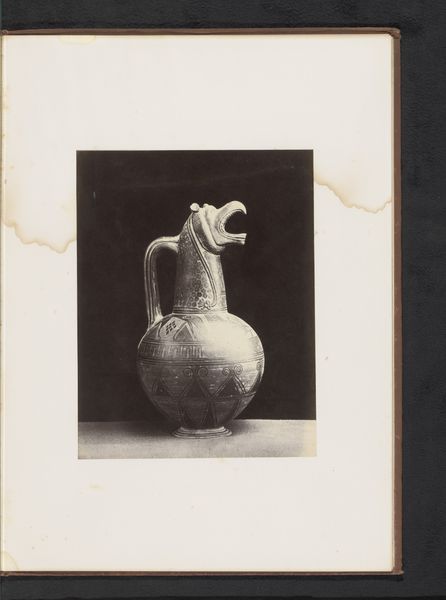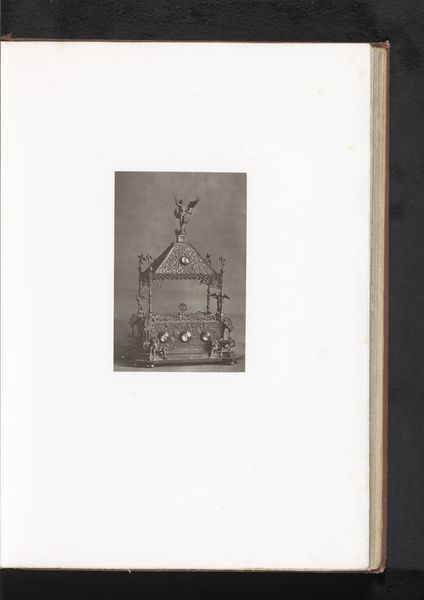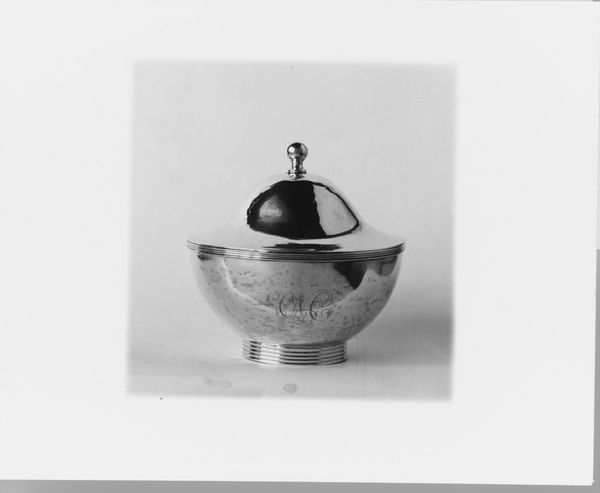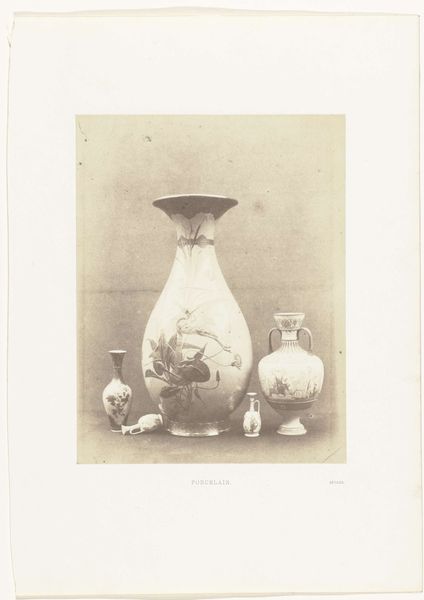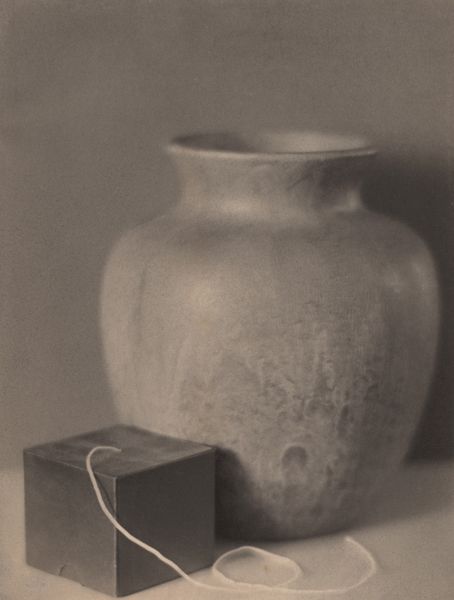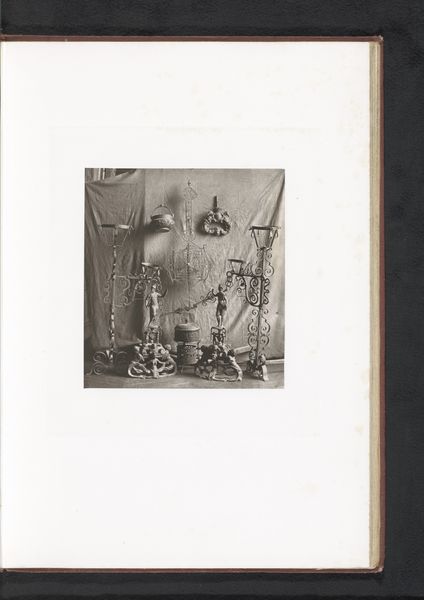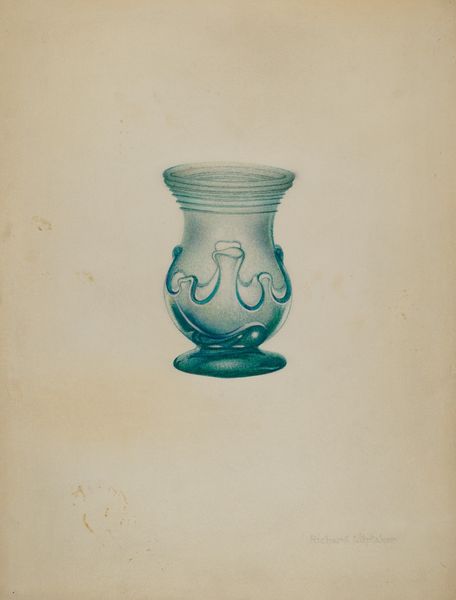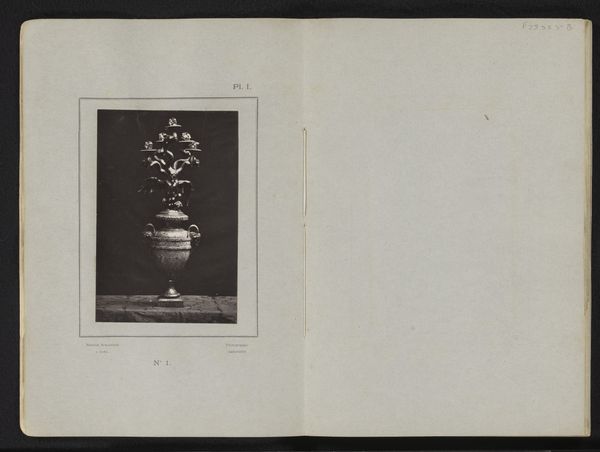
tempera, print, ceramic, photography
tempera
greek-and-roman-art
ceramic
vase
photography
ancient-mediterranean
Dimensions: height 247 mm, width 186 mm
Copyright: Rijks Museum: Open Domain
Curator: Here we have a photograph of an ancient ceramic vase, specifically an oenochoe, meaning wine jug in Greek. It’s been dated to before 1874 and is adorned with the figure of a woman spinning. It's a small piece but somehow captures a vast history, wouldn't you agree? Editor: My first impression is one of domesticity. The woman spinning is almost archetypal. There's a sense of everyday life, captured even within a potentially idealized form. It gives me an immediate connection to the past, seeing this humble scene depicted on something so utilitarian, then considered valuable. Curator: Indeed, the spinning woman is a potent symbol. In ancient Greece, women and their domestic activities, especially weaving and spinning, held a symbolic value, often linked to fate and destiny. This piece captures an idealized image of the virtuous wife managing household duties. In turn, these figures and scenes influenced later domesticity and even representations in funerary art. Editor: So, this isn't just a simple depiction, but carries a social and cultural weight? Seeing that this image made it to an artwork to preserve means this idealized version of a woman's duty influenced not only the household, but even politics of imagery we see on museum walls today. It gives us clues of what domestic dynamics influenced which values society deemed "historical". Curator: Precisely. Considering that it's preserved through its photographic reproduction speaks volumes. Even by the time it was photographed, its imagery spoke to certain social norms. Think of the Victorian era obsession with virtue. How were ancient Greek notions of domestic life used for those purposes? It's cultural memory playing out, continuously being interpreted across time. Editor: That's what I find so compelling. Its value keeps shifting with different audiences through history. An interesting glimpse into the quiet power of what has historically been relegated to domestic settings. I wonder who looked at the piece during its creation. Did it incite certain expectations for what domestic labor can bring to culture? Curator: It allows us to reflect on how representations, even of simple acts, carry immense social and cultural weight through time. It makes me see the cyclical nature of meaning making in society today. Editor: Agreed. And on the way women’s labour – ‘domesticity’ – became art because people were more inclined to accept, appreciate, and immortalize a vision of social life rather than social change. Food for thought on what gets canonized today.
Comments
No comments
Be the first to comment and join the conversation on the ultimate creative platform.

